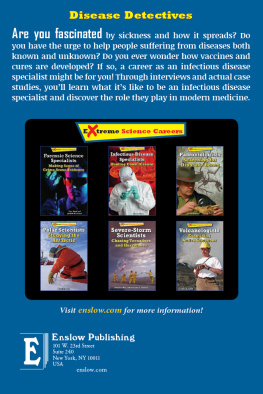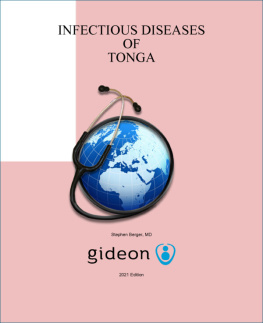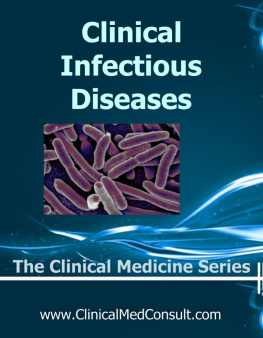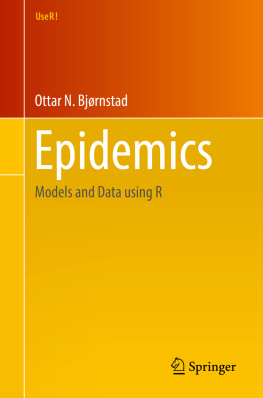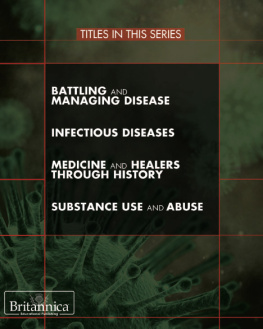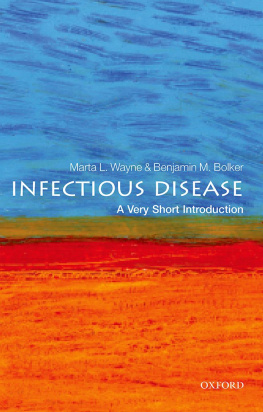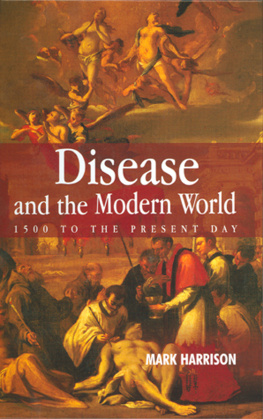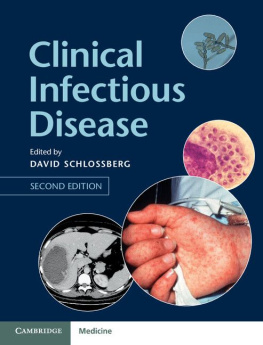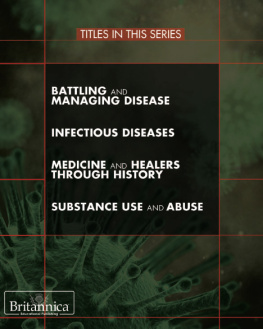Published in 2016 by Enslow Publishing, LLC
101 W. 23rd Street, Suite 240, New York, NY 10011
Copyright 2016 by Edward Willett
All rights reserved.
No part of this book may be reproduced by any means without the written permission of the publisher.
Cataloging-in-Publication Data
Willett, Edward.
Infectious disease specialists: hunting down disease / by Edward Willett.
p. cm. (Extreme science careers)
Includes bibliographical references and index.
ISBN 978-0-7660-6970-1 (library binding)
1. Epidemiology Juvenile literature. 2. Epidemiologists Juvenile literature.
I. Willett, Edward, 1959-. II. Title.
RA653.5 W58 2016
614.4d23
Printed in the United States of America
To Our Readers: We have done our best to make sure all Web site addresses in this book were active and appropriate when we went to press. However, the author and the publisher have no control over and assume no liability for the material available on those Web sites or on any Web sites they may link to. Any comments or suggestions can be sent by e-mail to .
Portions of this book originally appeared in the book Disease-Hunting Scientist: Careers Hunting Deadly Diseases.
Photo Credits: Adam Pletts/Getty Images, p..
Cover Credits: Andrej Vodolazhskyi/Shutterstock.com (background); Carlos E. Santa Maria/Shutterstock.com (scientist).
Contents
Investigating Disease
Marta Guerra: Battling Ebola
James Strong: Science in a Space Suit
Laurie Richardson: Stalking the Coral Killer
Jonathan Runstadler: The Biology of Bird Flu
Lisa Fernando: An Outbreak of Marburg
Jonathan Epstein: Seeking the Source of SARS
Appendix: Infectious Disease Specialists: Jobs at a Glance
Chapter Notes
Glossary
Further Reading
Index
The influenza virus as seen with an electron microscope. Infectious disease scientists study why people get certain diseases and what can be done to stop those diseases from spreading.
Chapter 1
Investigating Disease
I f youve always thought that scientists spend all their time wearing white lab coats and either peering through microscopes or juggling test tubes, then youre about to have your eyes opened. The scientists you will read about in this book have spent plenty of time in the laboratorybut theyve also done a few other things, like stringing mesh nets in Chinese caves to catch bats, rolling along darkened African roads hoping to avoid armed rebels, scuba-diving on coral reefs off the coast of Florida, and camping in the Alaskan wilderness (though admittedly not all at the same time).
You have to admit it all sounds pretty extreme. And those are just some of the things these scientists have done while investigating diseases. You may have heard of some of these diseases, such as Ebola. Other diseases, such as black band disease, are probably new to you.
While some of the scientists in this book are medical doctors and others are biologists or veterinarians, almost all of them also call themselves epidemiologists. Epidemiology is the study of how often diseases affect different groups of people or animals, where different diseases develop, and why some people or animals develop them. Figuring out all these things is often very much like solving a mystery. That is why epidemiologists are often called disease detectives.
More and more, the epidemiology of diseases in humans and the epidemiology of diseases in animals are linked. There is a good reason for this. According to one recent study, out of 1,415 viruses, bacteria, and parasites known to cause disease in humans, 61 percent are zoonotic. That means they can be transmitted between humans and animals. The same study indicates there are 175 disease-causing organisms that are considered emerging, meaning the diseases they cause have only recently been identified. Of those new diseases, 75 percent are zoonotic.
Some of the most dangerous new diseases began with animals. As people continue to move into areas of the earth where humans have not lived before, they will continue to drive animals out of their natural habitats. Animals that have had very little contact with humans before will now have more and more. That means that there are likely to be more emerging diseases making the jump from animals to humans. And since international air travel is so common, those emerging diseases can quickly spread around the world.
A scientist extracts frozen cells from ape and dog kidneys to be used in a possible vaccine for avian influenza.
Some disease scientists study deadly viruses like Ebola, shown here under a microscope.
To protect human health, we need to know more about how these organisms cause disease in humans, how they jump from animals to humans, and how outbreaks of these diseases can be controlled.
Disease detectives also work with nonhuman diseases, such as the black band disease that is killing coral reefs. Diseases like this can have a devastating impact on the environment as a whole, harming not only the species directly affected but also all those that are linked to it within a particular habitat.
Disease detectives, in other words, have their work cut out for them. As you will see in this book, they are up to the task. To learn what they can about emerging diseases and help those affected by them, they will go to any lengths, depths, and heights... no matter how extreme.
A researcher removes a bat caught in a mist net for testing. This is one of the many possible jobs of a disease-fighting scientist.
The family of Ebola victim Emile Ouamouno. Emile was the first patient to contract Ebola in his village, which became ground zero for the worst Ebola epidemic in history.
Chapter 2
MARTA GUERRA
Battling Ebola
O n December 6, 2013, a two-year old boy named Emile Ouamouno died in a small village in Guinea. The cause of death was Ebola hemorrhagic fever. He was the first person in his village to ever contract Ebola. By January, his three-year-old sister, his mother, and his grandmother had all died.
Though no one knew it at the time, it was the start of the largest Ebola epidemic in history, an epidemic which is continuing: As of February 25, 2015, there had been 23,729 suspected, probable and confirmed cases, 14,237 laboratory-confirmed cases, and 9,604 deaths across several West African countries.
Inspired by a Movie
Even before the current epidemic, Ebola had held a grip on the imagination of people around the world. In the movie

